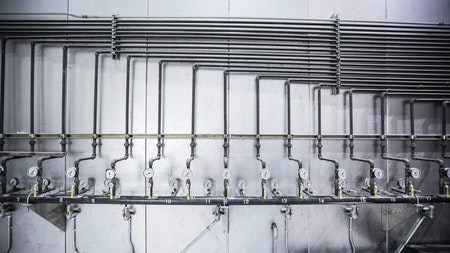Rainwater harvesting is described as a method of collecting rainwater for later use, as opposed to letting it run off into the drainage and sewer systems. It’s commonly used in rural areas and on farms but is fast-becoming an alternative method of using water and living more sustainably for people living in urban areas. Other names for rainwater harvesting include rainwater collection, rainwater catchment, roof water collection, and rooftop water collection.
Rainwater harvesting in South Africa
In South Africa, rainwater is typically collected from the roofs of buildings. It is then stored in tanks for later use. On a larger scale, dams are considered excellent structures for collecting groundwater runoff and they provide underground storage for water.
Sophisticated rainwater systems can be connected to existing structures, allowing rainwater to be used directly from the collection tank.
What can rainwater be used for?
Rainwater can be used for:
Agriculture
Commercial purposes
Residential purposes such as toilet flushing, washing clothing, bathing, showering, watering the garden, etc.
The benefits of rainwater harvesting
There are many benefits associated with harvesting rainwater. These include:
Harvesting rainwater is free, which can help you save money on your monthly water bill
It provides relatively clean and safe water which is immediately usable
It promotes sustainable living as it benefits the environment
It helps with saving water
It puts you in direct control of your water supply
It reduces stormwater runoff, helping increase the durability of roads
Due to its lack of chlorine, it’s healthier for plants
It can help with preventing soil erosion
It can reduce the incidences of water pooling in your yard after heavy rain, providing a cost-effective solution to your drainage issues
You can use your rainwater harvesting system as an add-on or back-up to your municipal water system. Should your area experience a water cut, you won’t be adversely affected
Rainwater harvest systems are easily customisable and be fitted into existing structures to amplify their effectiveness
The disadvantages of rainwater harvesting
Rainfall can be quite unpredictable, especially in many parts of South Africa that often experience frequent periods of drought
A lack of maintenance can make your rainwater system or tank attract many pests
Rainwater systems can often overflow, particularly during rainy seasons.
Roofs can be prone to bird and rat droppings, as well as chemicals
The initial installation fee is quite high
The different parts of a rainwater harvesting system
There are 4 different components that make up a rainwater harvesting system, namely: the rainwater harvesting catchment system, the transportation system, the first flush system, and the filter system.
The rainwater harvesting catchment system is the surface where the rainwater falls before it is redirected. An example is a rooftop, where rainwater falls prior to it being rerouted into gutters and transportation systems. The larger the catchment area, the more water will be collected.
The transportation system refers to the downpipes and drains that move water from the roof. It is recommended that you use pipes that are UV resistant, such as PVC and ISI HDPE pipes. They should be installed with a wire mesh to help filter any dirt in the water that may have come from the roof.
The first flush is considered a vital aspect of a rainwater harvesting system because it plays a significant role in the cleanliness of the water. It helps divert the very first amount of rainwater away from the harvesting system to prevent dirt and debris from collecting in the tank. It will also make maintaining the system much easier as it reduces the need for cleaning, increasing the system’s overall durability.
The filter system removes unwanted particles and contaminants to ensure that the water is safe for use. Metal particles, organic debris, and chemicals are some of the contaminants removed by the filtration system.
Top things to consider before harvesting rainwater
1. Your tank size
Your tank size will depend on the purpose you’re using your rainwater harvesting system for. Someone who’s using it to irrigate large pieces of land will need a bigger tank than some who’s using it for household use.
2. The size of your property
Your tank size should also fit the size of your property. It’s not advisable to install an industrial-sized tank in a residential area. It’s also key to keep aesthetics in mind. Consider what type of tank will look good in your garden.
3. The location of your tank
Consider where you’ll place your tank. A tank on the roof isn’t recommended, as it can destroy the integrity of your roof, considering the fact that 1000 litres of water weighs 1 tonne.
4. Your roof size
If your roof size or catchment area is too small, it may not work well for rainwater harvesting. The smaller the roof, the less water can be collected.
5. The amount of water you’ll need
How much pressure will be applied to the rainwater harvesting system? Bear in mind that if you require a lot of water, your system might not be able to meet your requirements. Added to that, you may harvest more water than you’re able to use. Consider what you’ll do in such a scenario.
6. Consider adding drainage to your tank
Including drainage in your rainwater harvesting system can assist with preventing overflow.
7. The total cost of the system from installation to maintenance
Factor in the cost of installing the system, including the labour required, as well as the maintenance costs. It’s better to be well prepared for the financial responsibility than to be surprised down the line.
Using the information above, you can install an effective rainwater harvesting system for your home for a more sustainable and cost-effective way of life.




